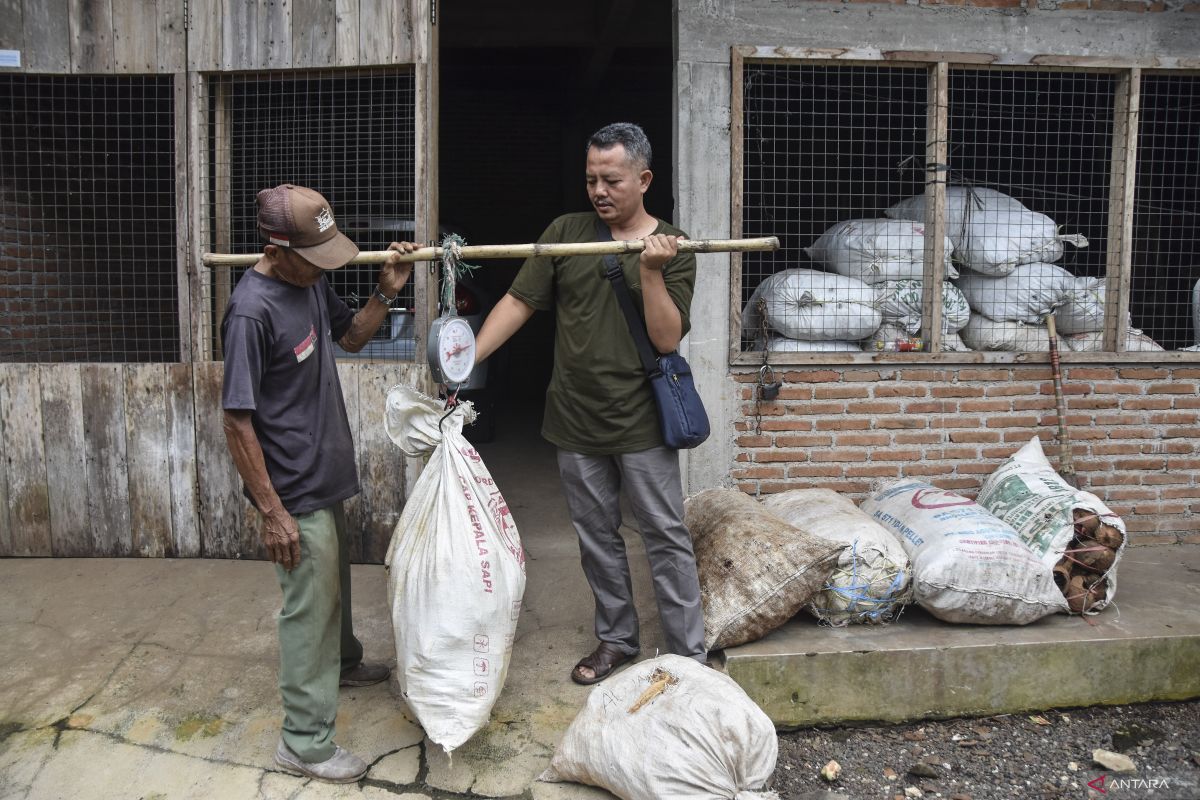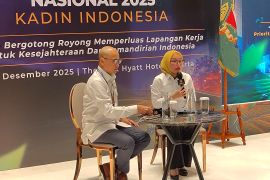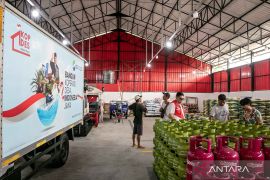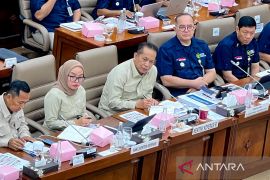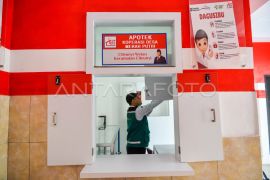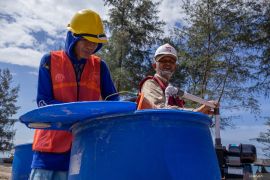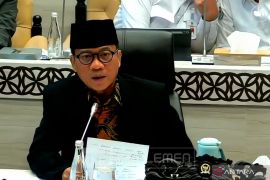According to the government, the program's aim is to drive economic growth and empower rural communities. However, several parties have expressed concern that the move, if not managed carefully, could pose a new threat to the village economy.
President Prabowo Subianto has often emphasized the importance of building food independence, village economic sovereignty, and mutual cooperation.
However, it begs the question: Can the plan for village cooperatives truly bring about this independence?
Under Prabowo's leadership, the government has set the target to form 80 thousand Red and White Village Cooperatives across Indonesia. They will be launched on July 12, 2025, coinciding with National Cooperative Day, and are targeted to become operational by October 28.
The total budget needed to establish the cooperatives is estimated to reach Rp400 trillion (around US$24.5 billion).
For the initial capital, the cooperatives can secure loans from state-owned banks. The government has set the loan ceiling at Rp3 billion (around US$184,116) per cooperative unit.
Each cooperative will be required to repay the loan in installments over a period of six years.
Related news: RI Govt says village co-ops will help bring down extreme poverty
Opportunities and challenges
The Ministry of Cooperatives has identified at least eight challenges to the establishment of the village cooperatives. First, low public participation and awareness about the importance of cooperatives, as reflected in the low membership rate.
Despite a population of 280 million, only around 25 million Indonesians, or less than 10 percent of the total population, are registered as cooperative members, the minister pointed out.
The second challenge is the negative public perception of cooperatives due to cases of problematic cooperatives and illegal online loans taken by unscrupulous actors in the guise of cooperatives.
The third and fourth challenges are the lack of technological adaptation by cooperatives and differences in economic scale and potential between villages.
The next challenge is disparities in the capacity and competence of human resources in various villages.
Sixth, the potential for abuse of power in the formation and management of the village cooperatives.
Seventh, the risk of fraud due to unprofessional management, and eighth, issues related to the continuity of cooperative institutions and businesses.
One of the issues that is under the spotlight is the cooperatives' financing scheme, which could open up scope for fraud, if not managed professionally.
The Rp3 billion financing envisaged for each village is a significant sum that reflects the high trust in the potential of villages. It also opens up a chance for state-owned banks to contribute to economic development at the grassroots level.
However, many parties are concerned that the financing model could increase the non-performing loans (NPL) of banks. In addition, the plan for village funds to be used as collateral for bank loans has also raised worries.
It is feared that the financing scheme involving loans from state-owned banks, which would be repaid in installments using village funds, could burden village finances in the long term.
Further, the use of village funds—which are essentially meant for village development—as collateral could hamper the construction of village roads, bridges, schools, and other important public infrastructure.
According to a member of Commission VI of the House of Representatives (DPR), Nurdin Halid, this could disrupt village development goals since villages may not be ready to bear the burden of structural debt.
In this regard, Cooperatives Minister Budi Arie Setiadi said that a technology-based system would be adopted to lower the risks of losses or fraud.
The Ministry of Cooperatives will focus on improving human resources, management systems, and cooperatives' institutions.
The plan for village cooperatives to sell staple goods, LPG, and fertilizers has also raised concerns about the existing micro, small, and medium enterprise (MSME) ecosystem in villages.
A number of parties are concerned about the fate of small shops that serve as the backbone of the family economy in villages if they have to compete with cooperatives, which would have greater capital and access.
Therefore, it is important to ensure that village cooperatives do not hurt existing businesses, and instead, become drivers that support the growth of MSMEs.
Responding to this, the Ministry of Cooperatives has assured that village cooperatives would not hurt village-owned enterprises (BUMDes) or MSMEs. Instead, they would be further strengthened by village cooperatives as they would become working partners in building the village economy.
Concerning the risk of nepotism and corruption in the cooperatives, especially since village heads would automatically become chairs of cooperative supervisory boards, Minister Setiadi assured that his ministry has prohibited relations of village heads from becoming cooperative managers.
Despite all these challenges, the Red and White Village Cooperatives have the potential to generate significant profits—as long as they are managed properly and professionally.
As per the estimate of the Minister of Cooperatives, each cooperative could turn in a profit of up to Rp1 billion (around US$61,372) per year.
This would be possible by cutting the role of middlemen and improving efficiency in distributing subsidies.
According to Setiadi, middlemen and loan sharks tend to earn profits of up to Rp300 trillion (around US$18.4 billion). This is seen as unfair for people from both rural and urban areas.
With village cooperatives enabling efficient distribution channels, Rp90 trillion, or around 30 percent of the total Rp300 trillion, could be saved and channeled back to villages, he projected.
He added that the village cooperatives are the President's initiative to ensure that state-subsidized goods reach the community effectively and efficiently.
He said that the main obstacles to the formation of the village cooperative are fear, suspicion, and doubt.
He noted that there is a lot of criticism and claims that village communities are not ready to accept the program.
This concern is not without reason. Indonesia has a history of failed village cooperatives as well as village-owned enterprises.
Considering this bitter experience, there needs to be a concrete guarantee from the government so that village cooperatives are not misused to benefit certain individuals in villages.
Without strict supervision and a transparent accountability system, the risk of misuse of funds and corrupt practices would be quite high.
The government would also need to prioritize quality over quantity for village cooperatives. It would need to refrain from trying to complete the target of forming 80 thousand cooperatives in a hurry, without adequate administrative preparation or human resources.
At the end of the day, cooperatives must be born out of the awareness and readiness of villages to be resilient and sustainable, and thereby, achieve the key goal of realizing village economic independence.
Without concrete measures, these cooperatives would only be an illusion and a new risk that disadvantages villages and rural communities.
Related news: Prabowo aims to improve living standards via village co-ops: KSP
Editor: Rahmad Nasution
Copyright © ANTARA 2025
